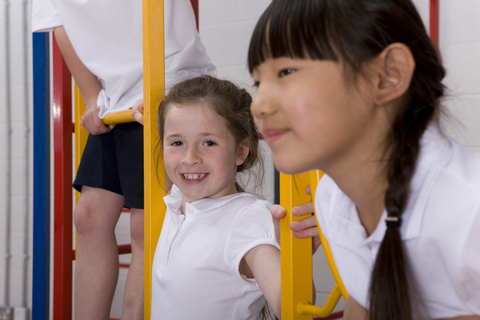It’s well known that Australian universities attract students from around the world. Several studies document the impact of international students on the Australian university system, as well as the benefits and challenges of accommodating these students. An increasing number of Australian primary and secondary schools also play host to fee-paying international students. Yet this equally important trend has received much less attention.
To maximise the benefits of accommodating international students in schools for teachers, students, and the wider community, three important questions must be asked.
- What motivates schools to accept and recruit international students?
- What does the school community stand to gain by doing so?
- What challenges do host schools, teachers, and students face?
International Students in Australian Schools: The Facts
As early as 1951, foreign minister Paul Hasluck affirmed that 834 Asian students were enrolled in Australian primary and secondary schools. Over the years the number of international school children in Australia has grown. In 2014 and 2015, international student enrolments at government schools, particularly in New South Wales and Victoria, increased between 15 to 20%. Overseas enrolments across Australia increased by a quarter from 1995 to 2015.
In 2015, around 25,000 foreign students were enrolled at either public or private schools across the country. Federal Education Department figures indicate that in 2016, about 16625 International students were school children. Interestingly, a growing number of non-Australian families are declining to pay costly private school fees, preferring to enrol children in government schools.
International students as young as five can now study in Australia. Many foreign pupils come from countries such as Vietnam, Malaysia, Korea, and especially China, following a relaxation of visa regulations for Chinese students.
Advantages for Parents and Students
- Studies show that non-Australians often send children to Australian schools if they are struggling academically or experiencing problems at school.
- Australian schools prepare students for entry into prestigious Australian universities and maximise their chances of keeping up with the workload once admitted. Teachers also suggest that an Australian education may increase a student’s chances of gaining admission.
- The pervasive influence of Anglophone cultures means that English language proficiency is an asset for jobseekers in an increasingly globalised workforce.
- Attendance at Australian schools strengthens applications for permanent residency and citizenship.
Advantages for Schools and Teachers
- Fee-paying international students provide extra funding to public schools. Research revealed that the development of international programs at one government school was “primarily economic.” Principal Hugh Blaikie echoes the views of others, saying that international student funding allows for investment in school infrastructure and makes it possible to employ teachers with a wider range of skills and expertise.
- International students encourage teachers and students to develop their communication skills and awareness of different cultures. A teacher who works with international students has opportunities to develop a wider variety teaching of styles and strategies. This strengthens the quality of teaching and learning environments and the “global competence” of teachers and students.
- Teaching strategies which benefit international students (e.g. reiterating ideas in a range of different ways) also reinforce concepts for local students.
- International students help maintain class sizes in crucial Year 12 subjects. The presence of international students also supports extra teaching loads.
Challenges for Schools
The internationalisation of Australian schools also presents challenges as well as rewards. These include:
- Balancing local and international demand for places within the school system. Although principals affirm that local students get first priority with regard to enrolment, some teachers reported tension arising from the need to simultaneously serve the local community and adapt policy and curriculum to the needs of international pupils.
- Some instructors view international students as an additional burden to an already heavy teaching load.
- The quality of learning and teaching experiences varies significantly depending on the range of resources available. Some schools are better equipped to provide specialised support for international students and their instructors than others.
- Finding appropriate homestay placements for students can be difficult. The demand for homestay placements is rapidly expanding and often exceeds availability.
- Insufficient practical advice is available to Australian schools on how to integrate foreign students into local communities, or how to recognise and maximise the ways in which international students can provide learning opportunities for host schools.
Clearly, it is neither possible nor desirable for all schools to accept international students. Doing so requires considerable time, effort, and resources that some school communities simply don’t have. However, overseas students have much to offer Australian schools, as long as host institutions can provide the infrastructure to support their presence without compromising the needs of local communities.
Sources
Arber, Ruth, and Jillian Blackmore. “The impact of fee-paying International students on Australian secondary schools, teachers and students.” Deakin University. 2010.
Doyle, Julie. “International students studying in Australia reach record number, Education Department figures show.” ABC News. 22 February, 2017.
O’Shannessy, Aaron. “Internationalising students in Australia.” Asia Education Foundation Leadership Blog. 31 July, 2017.
Smith, Alexandra. “Huge increase in full fee-paying international students at NSW public schools.” The Sydney Morning Herald. 17 May, 2015.
Smith, Shannon. “International education is older than you think.” The Australian. 15 June, 2011. (viewed 14 February, 2018).
Taylor, Josie, and Alison Branley. “State schools cashing in on international student enrolments; 17pc rise in overseas pupils in past year.” ABC News. 18 May, 2015.



